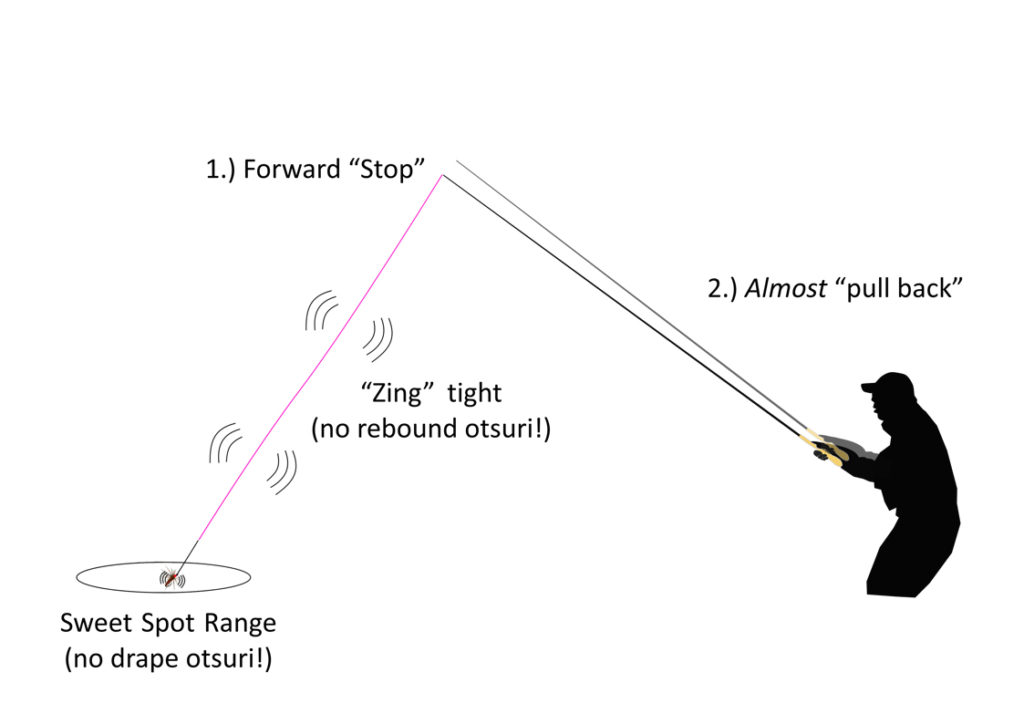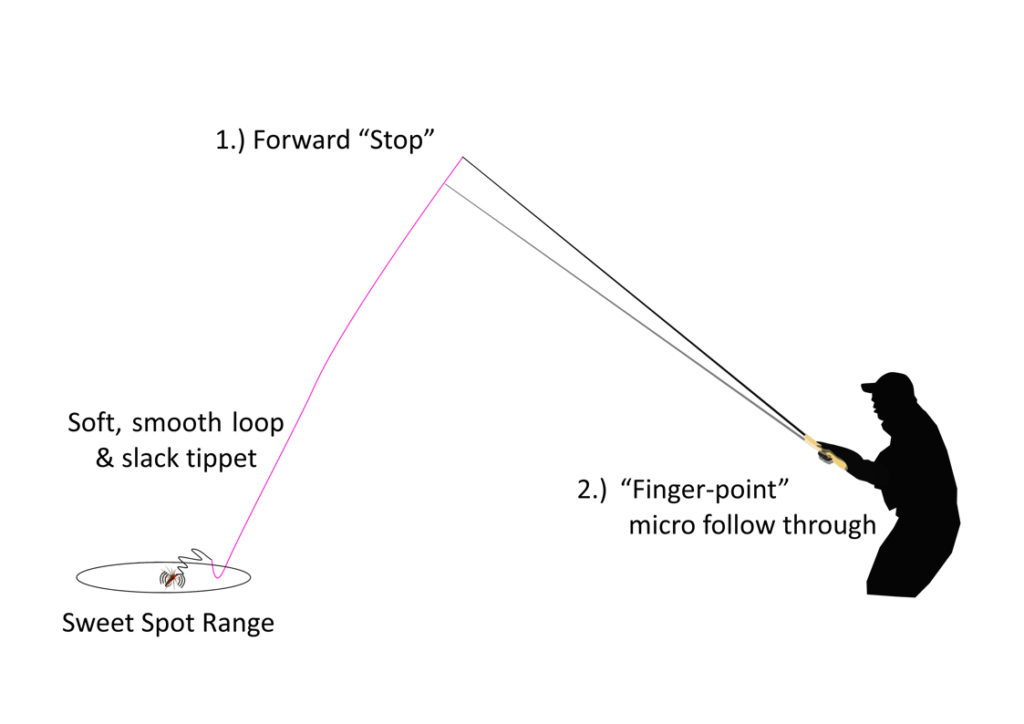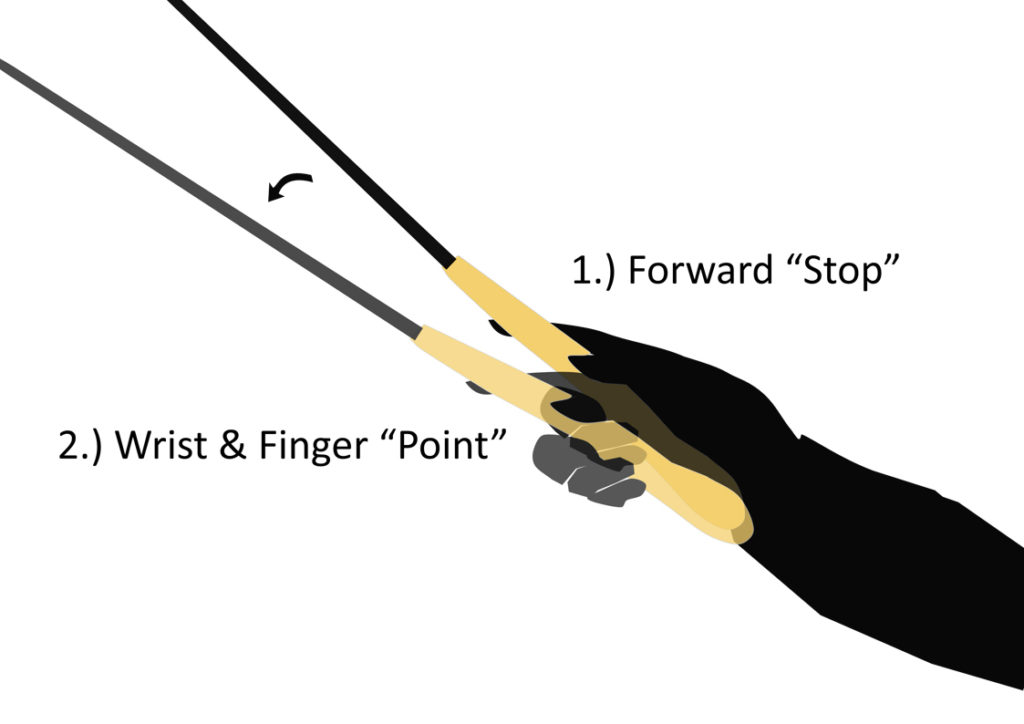See Part 1 Here (do not pass “Go” and do not collect any other gold-dust tips before absorbing Part 1)
So,
I see you mastered two kinds of “otsuri” already? Dios mio man; OK get
ready to decide how deep your unweighted kebari fishes – just by the way
you cast.
This is a really
fundamental skill and it needs to become second nature – after a short
while you won’t even be aware of doing it.
You already found out
about the sweet-spot range for a particular rig – and how to stop
“otsuri” from spoiling your drift. Having got your head well and truly
around that “sweet spot” concept, you will find that your casts
automatically start to become angled diagonally downwards onto the
water.
This is quite different from the usual way of casting a regular fly rod – where the line travels out roughly parallel to the water as it fully extends and then drops onto the water. One interesting exception to that is the Italian style of casting – where the dry fly is cast at a shallow downwards angle (so that it lands before the fly line does). You should realise (because it is a key secret to success) that in both tenkara and the Italian style of casting with a fly rod and reel – the landing of the fly on the water acts as a powerful trigger to a hungry fish. As far as possible, that gentle “splat” of the fly should be the first (or only) disturbance on the water to draw the fish’s attention.
This is the “dinner bell” ringing for the fish – without the accompanying “warning siren” of a possible predator…In other words, a big positive attraction WITHOUT any deterrent or distraction.
Although the two casting styles have found some similar solutions to fly fishing challenges, there are some obvious differences too. For example, with tenkara, the fly is generally a wet fly and (if at all possible) the casting line never touches the water. Because Italian fly casting uses regular, floating fly line, that casting line really “wants” to lay on the water and you can’t really stop it from landing on the water once you are casting at any kind of range…. Which reminds us all about “otsuri” once again.
The main thing I
want you to understand on a “bones-deep” level is the advantage of
landing the fly on the water with no other distractions for the fish.
Once you have that downward-angled cast (without rebound and at the
sweet-spot distance), you can start thinking about depth control…
I
know I promised you that control via casting – and I will deliver that
(pinky promise). I just don’t want you to leave without some other
secret sauce advantages first.
As usual, don’t be fooled by their simplicity – there is power in simplicity that has been hard-won through extensive testing…Firstly, if you want to fish in/on or very close to the surface; choose a kebari (fly) that
- Is dressed on a relatively light hook
- Has a lightweight, non-absorbant dressing
- Is hackled in the futsū style (stiff rooster hackle with the barbs sitting at around 90-degrees to the shank)
All those things combine to slow down the sinking rate of that kebari and keep it high in/on the water.
For fishing deeper, obviously use a kebari that has faster-sinking features (e.g. heavier wire hook, more streamlined dressing and so on). In future content you will learn a lot more about kebari design features that control both depth and “action” of your dressings (such as the different effect of a soft “jun” hackle versus the same hackle tied in a “sakasa” direction). But that amount of detail starts to derail the main point of this lesson…
Which is – how you can control kebari depth by controlling line tension at the critical split second that your fly lands on the water. At the most basic level, it is only a case of keeping the line tight when you want to fish shallow and introducing the right amount of slack when you want the fly to drop deeper into the water. Think of it like having a tight or a loose leash on a dog. The looser the leash, the more freedom.
But, like most simple things, this is easier said than done. For a start – you don’t want to put so much slack into the system that you lose all accuracy. You also don’t want to lose your ability to hold the casting line off the water…and you definitely don’t want to fail to detect when a fish grabs your fly because you’ve lost all “contact” with it.
By the same token, you usually cannot afford to skate the fly back towards you across the surface (drape otsuri) or do a comedy “bungee jump” cast where the fly bounces back and lands by your feet (or round your neck).
This is a question of balance and precision.
Let’s take the slightly easier option first…
Fishing Shallow
For this, you need to aim towards the nearer edge of your sweet-spot range. And you must aim directly for it with full commitment. When done right, this means that the casting line and all the tippet unroll and come to near-perfect straight line at the exact point your fly touches down on the water. The feeling that I find helpful to get that right is to go for a deliberate “stop” on the forward delivery cast with the (usual) high-rod-tip position for tenkara…Then, just as the rod rebounds to a straight position (and you soften your grip to damp out that recover); concentrate on the slightest feeling of “pulling back” on the tip of the rod. You shouldn’t actually move the rod back – as this is a sure recipe for rebound otsuri…But just give yourself the sensation that you are about to pull back.

In this way, you will complete the cast and immediately be in “full fishing position” with no correction necessary. When added up over the course of a day, this results in way, way more quality time for your fly on/in the water. It also increases that quality at the most vital time (right after your tempting meal splats down and alerts the hungry fish that it is there/helpless/delicious).
Now for the one that is slightly more difficult…
Fishing Deeper
With
this tactic, the design/weight of the fly will set the maximum depth
you can gain by changing your casting action. But even with an
unweighted fly (e.g. the same one you might have fished on the surface
on your last cast), you can significantly increase the depth that it
fishes at…
The real trick is to preserving the high accuracy that you
often need with tenkara (to hit the very specific points in the current
where a fish can feed with minimum effort). The following casting
technique gives you excellent accuracy and buttery-smooth loops. This is
because it includes a little bit of natural “damping” on the forward
cast which helps to keep your loop both narrow and smooth (even with
your line knotted to your rod-tip and without the ability to shoot
line).
Here’s how to do it – first of all make your usual overhead tenkara cast (short arc, high forward-stop, cast angled down towards the water in the middle of your sweet-spot range). This feels as much like an “up and down” cast as it does a “back and forward” cast. The trick comes as you make the “stop” on the forward delivery…

Fractionally after you make that “stop” and the loop starts to unroll off your rod-tip down towards your target, just make a micro “finger point” movement down towards the water. In other words, bend your wrist slightly forward just after you make the “stop”. In practice this movement probably happens at the exact same moment that the rest of your arm is “stopping”. What this means is that the stopping motion is softened, the amount of deflection/rebound of the rod tip is reduced and the finishing position of the rod-tip is a tiny bit closer to the water’s surface.
Pay close attention to the words “a tiny bit closer”…This is not a case of turning your cast into a complete “windscreen-wiper” and ending up with a rod parallel to the water. It is a matter of a couple of inches (fill in your own jokes here).
Because this is a matter of very small details (and because you need to get both the broad idea AND understand how the fine details of what you actually DO with your hand) I’ve included a second diagram for this one.

Hopefully by studying both the diagrams and the text you can take what you need with you on-stream to get these tactics working in your own tenkara. Never underestimate the power of the fly first/fly-only cast – you’ll hear us talk endlessly about the spookily consistent 7x increase in catch rate compared to kissing the casting line down and then correcting…
Also, the house rules here state that if this is new information to you that you’ve not been able to get from another source – you share the article on social media (deal?)
Note well – merely “liking” the content doesn’t actually spread it very far (and fewer folks will realise what an awesome source of killer content/total tenkara stud/stud-ette you are).
“Likes” for show – “Shares” for a Pro…
You know it makes sense.
Paul
